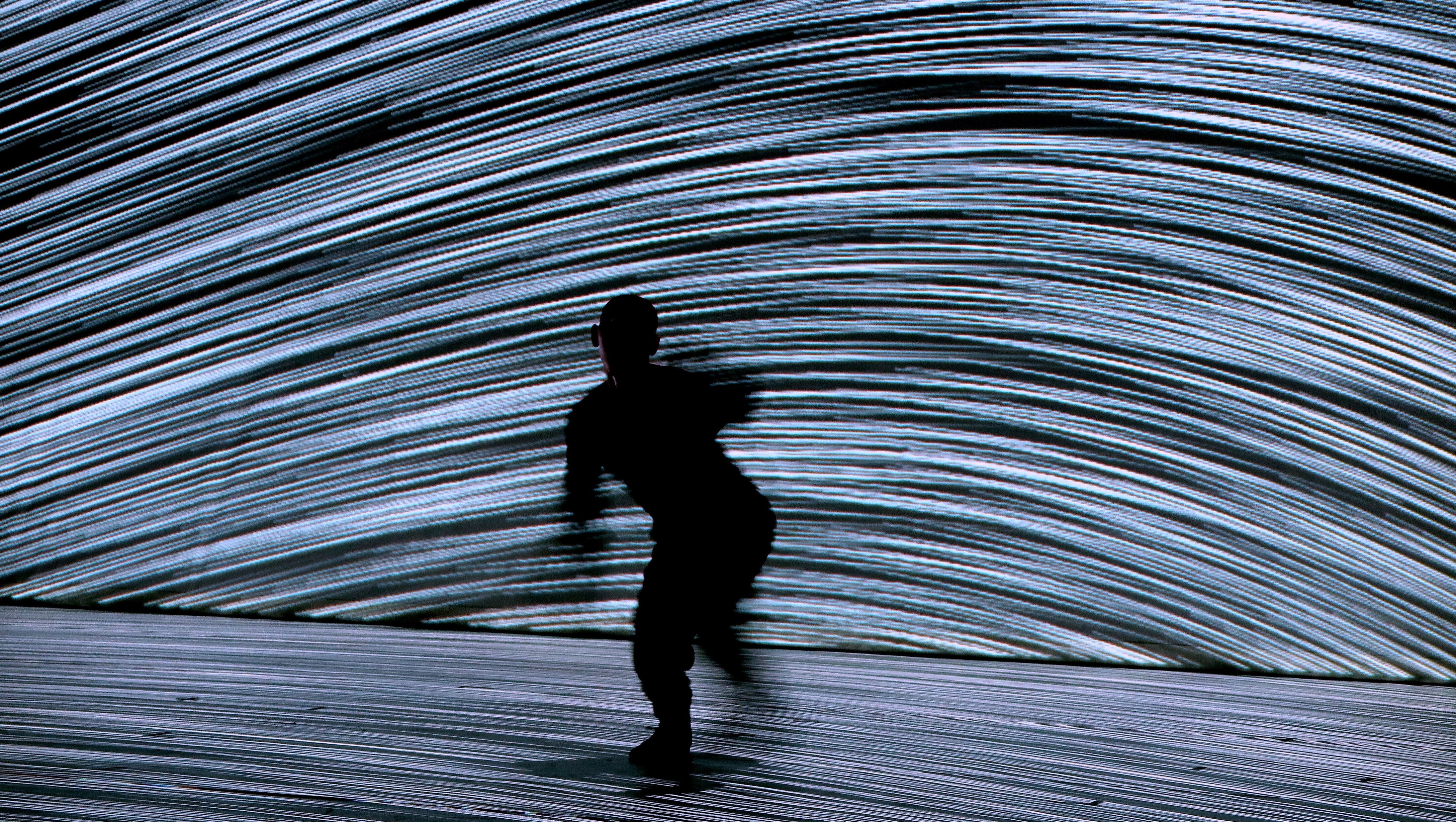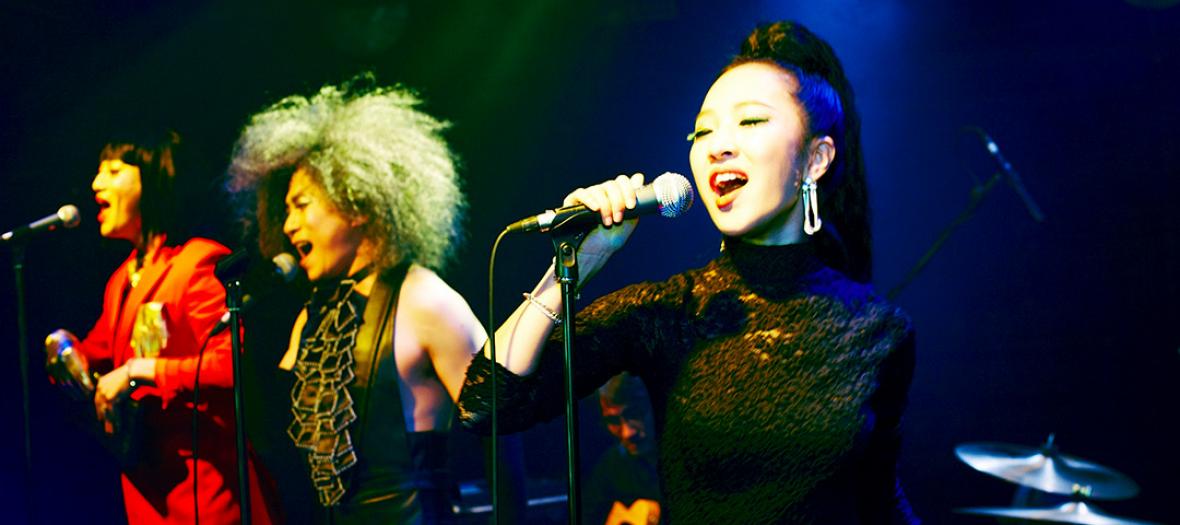1 hr 30 mins
EXCHANGE
A NIGHT ACROSS ASIA
Traditional Asian music as you’ve never seen (or heard) it before!
Brisbane Powerhouse’s Turbine Platform is transformed into an intimate club for a night of immersive, intriguing and entertaining performances by artists from across Asia. Guests will be treated to an irreverent showcase of work that highlights the world-class artistry produced from the region.
Be taken away by the captivating sonic and video installations by renowned Japanese digital artist Hiroaki Umeda. Korean folk music blended with rock, pop and extravagant visuals, witness SsingSsing combine the creative forces of its six musicians from diverse genres to form an eccentric band with a transfixing stage presence. Indonesia’s experimental duo Senyawa complete the line-up, with music that fuses elements of traditional Indonesian instrumentation with garage guitar distortion.
A rare opportunity not to be missed. Performances are open to APAM delegates and the general public - so bring all your friends.
A Night Across Asia and the performance by SsingSsing is supported by the Australian Government through the Australia-Korea Foundation of the Department of Foreign Affairs and Trade.
Image: Yun. Sukmu
SsingSsing
.jpg)
What do you get when you mix authentic, traditional Korean vocals with rock band flare, then add in some extravagant visuals and a transfixing stage presence? You get SsingSsing, Korea’s top rock/folk fusion act. Formed when six musicians from diverse genres aligned creative forces, this eccentric band welds two totally disparate elements: rock band bravado and deep-rooted Korean folk. SsingSsing skilfully blends these styles and presents them in a contemporary, accessible and all-round rocking concert with components of ballads, pop, and spiritual rituals.
Called “an irreverent but intriguing hybrid” by The New York Times, and “One of top discoveries from globalFEST 2017” by NPR, SsingSsing creates a distinctive musical atmosphere as they incorporate Korean traditional composition, such as GyeonggiSori (folk songs from central province around Seoul), SeodoSori (folk songs from northwestern provinces in North Korea), and Seoul Gut (shamanistic ritual from Seoul) in their highly nuanced and entertaining work.
Senyawa
.jpg)
Senyawa, the experimental duo from Jogjakarta in Indonesia, follow on from SsingSsing with music that fuses elements of traditional Indonesian instrumentation with garage guitar distortion. Senyawa’s sound borrows from the metal bands they listened to as teenagers – Black Sabbath, Metallica, Iron Maiden – and Indonesian ritual and folk idioms, specifically the traditional singing from the Indonesian island Sulawesi. Vocalist Rully Shabara’s deft extended vocal techniques punctuate the frenetic sounds from instrument builder, Wukir Suryadi’s modern yet primitive instrumentation.
HIROAKI UMEDA

Hiroaki Umeda is a choreographer and a multidisciplinary artist recognised as one of the leading figures of the Japanese avant-garde art scene. Since the launch of his company S20, his subtle yet violent dance pieces have toured around the world to audience and critical acclaim. His work is acknowledged for the highly holistic artistic methodology with strong digital background, which considers not only physical elements as dance, but also optical, sensorial and above all, spatiotemporal components as part of the choreography. Based on his profound interest in choreographing time and space, Umeda has spread his talent not only as a choreographer and dancer, but also as a composer, lighting designer, scenographer and visual artist.
Drawing further from his now signature style of mixing digital imagery, minimal soundscape and extremely potent corporeality, Umeda’s solo works such as Adapting for Distortion (2008), Haptic (2008), Holistic Strata (2011) and split flow (2013) have transfixed the audience in major festivals and theatres worldwide.
In 2009, Umeda commenced his ten-year choreographic project ’Superkinesis’ working with dancers of distinct physical backgrounds. He explores kinetic languages by tuning into the subtle voices of the surrounding environment that only could be perceived by an acute sensorial receptor called dancers. GötenborgsOperans Danskompani in Sweden commissioned Umeda’s choreography piece, Interfacial Scale (2013). His choreographic work Peripheral Stream (2014) was premiered at Théâtre Châtelet in 2014, commissioned by the LA Dance Project lead by Benjamin Millepied.
In order to extend his interest in providing an unknown sensorial experience to the audience, Umeda has been working on series of installations since 2010, which mainly focus on optical illusion and physical immersion. His string of works combining visual and physical sensation has earned him Prix Ars Electronica, Honorary Mention in 2010.
In 2014, he started ‘Somatic Field Project’, aiming at nurturing young dancers as well as his own movement method ‘Kinetic Force Method’.









